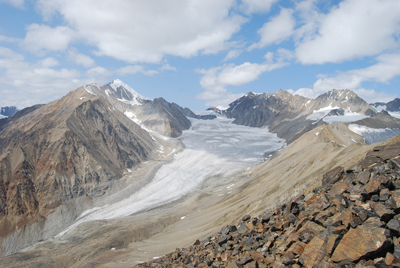Evolution of
Glacier Thermal Structure and Dynamics
in a Subarctic Environment
By:
Gwenn Flowers
Simon Fraser University
| When: | Friday, November 2, 2012, 10:30 a.m. to 11:30 a.m. Join us for coffee beginning at 10:00 a.m. |
| Where: | Seminar Conference Room, 10100 Burnet Road, Bldg 196-ROC, Austin, Texas 78758 |
| Host: | Ginny Catania, UTIG |
Click for a Live Broadcast.

Abstract
Some of the most climatically sensitive regions of the world are populated by small glaciers and ice caps, many of which are 'polythermal', or comprised of ice both at and below the melting point. Because of the dependence of ice viscosity on temperature, glacier thermal structure is a potentially significant influence on ice dynamics and has been implicated in some forms of flow instability.
Recent measurements from the highly glacierized St. Elias region of southwest Yukon, Canada will be used to illustrate the characteristic polythermal structures of glaciers in this subarctic continental setting, and to highlight the thermal imprint of ice dynamics. Results from forward and inverse models reveal how long-term changes in mass balance are altering ice dynamics and thermal structure in this particular region, and hint at an evolution toward colder, slower glaciers in the future.




